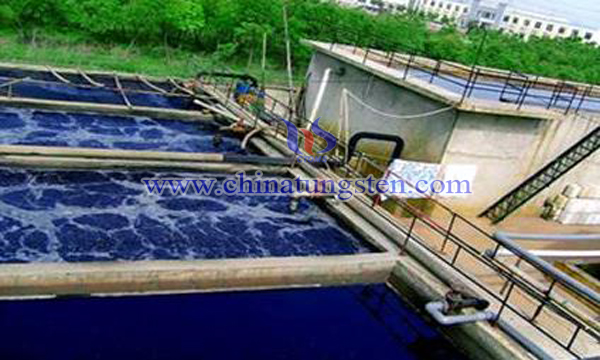Boron Nitride / Bismuth Tungstate Composite Photocatalyst
- Details
- Category: Tungsten Information
- Published on Friday, 01 June 2018 16:42
Photocatalysis is a technology that uses the energy of natural light to convert into chemical reaction and produces catalytic technology to decompose organic substances which are harmful to the human body and the environment, and will not cause the waste of resources and the formation of additional pollution. Bismuth tungstate is a typical representative of new photocatalysis. The research is focused on the development of a new type of Bi2WO6 based composite photocatalyst. Modification are the effective means to improve the photocatalytic level of bismuth tungstate.

Some researchers used boron nitride and bismuth tungstate photocatalyst to solve the defect that the specific surface area of bismuth tungstate photocatalyst was not high, the photocatalytic activity site was less, and the binding ability between the components was weak. The process is as follows:
(1) The carbon ten borane was dissolved in tetrahydrofuran, and the tetrahydrofuran solution of carbon ten borane was obtained.
(2) Five bismuth nitrate and two sodium tungstate were dissolved in ethylene glycol, and bismuth tungstate precursor solution was obtained. Under magnetic stirring, the solution of bismuth acid precursor was added to the tetrahydrofuran solution of carbon ten borane, then 4 '- bipyridine was added and the magnetic force was stirred for 30min ~ 60min, and the mixed solution was transferred into the water heat. In the reaction kettle, the coordination polymerization was carried out, the temperature was 150 ~ 180°C, the time was 90h ~ 96h. After the reaction was finished centrifugation, the sediment was washed and dried, and the coordination polymer was obtained.
(3) The coordination polymer was heat treated at a temperature of 600~650°C, and the time was 2.5h ~ 3.5H, and a composite photocatalyst of boron nitride - bismuth tungstate was obtained for degradation of organic dyes.
In the presence of 4, 4 '- bipyridine, a complex coordination polymer is formed with carbon ten borane, metal ion bismuth and tungsten in the presence of 4, 4' - bipyridine, and the complex coordination polymer can be prepared by high temperature heat treatment to obtain a composite of boron nitride and bismuth tungstate composite photocatalyst. Because of the molecular level polymerization, the composite photocatalyst prepared by this method is nanometer size, with a high specific surface area, which can provide more active sites for the adsorbed pollutants, and the binding force of boron nitride to bismuth tungstate is stronger, thus having high photocatalytic activity and photocatalytic stability.
The preparation process of boron nitride / bismuth tungstate photocatalyst is simple, the reaction condition is easy to control and the cost is low. It has good photocatalytic performance under visible light. It can be widely used in the field of photodegradation of dye wastewater and has potential industrial application prospects.
- Tungsten Oxide Manufacturer & Supplier, Chinatungsten Online: www.tungsten-oxide.com
- Tungsten News & Prices of China Tungsten Industry Association: www.ctia.com.cn
- Molybdenum News & Price: news.molybdenum.com.cn
- Tel.: 86 592 5129696; Fax: 86 592 5129797; Email: sales@chinatungsten.com



 sales@chinatungsten.com
sales@chinatungsten.com